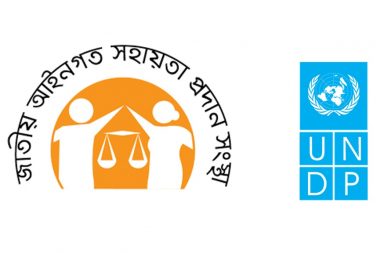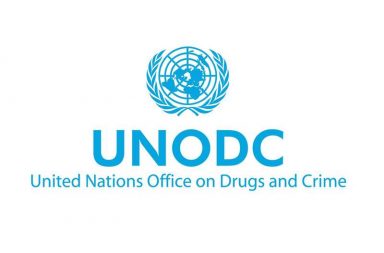By Biva Mosharraf
Despite being a predominantly conservative Muslim country, the sex market is expanding at an unprecedented pace touching every stratum of the society in the recent years to satisfy the growing and diverse sex demand of our patriarchal society. No logical explanation can transcend the facile generalizations both of those who believe that prostitution can be immediately abolished and of those who think vaguely that human nature does guarantee its immortality. In between, we forget about their existence and rights as human beings.
Every religion generates a firm influence on the culture and law in the states according to the majority population of the pursuant and Islam does very same to Bangladesh. In the cultural-religious space of Islam, the strictly imposed rule is the rigorous punishment of prostitution and co-related deeds, by severe criminal and other sanctions under the Shariah. But Bangladesh being a Muslim-majority country is an exception to it because there is a secular state power and so the religious factor has been diluted by other cultural influences, the regulations sanctioning prostitution and other criminal offenses connected thereto have lost part of the severity of repression specific to Islamic law.
Historical aspects of sex trade in Bangladesh
Despite having a stereotype conservative social contexture, its existence and practice are manifested in Bangladesh since early-colonial era. If we look into the contemporary literature of that period, it is evident that sex workers did not simply exchange sexual favors for money or other material gains, but their primary role was to provide entertainment in the form of classical music and dance to the elite groups of society. For this reason, they used to enjoy a high social status back then. The subsistence of Baijis and Khemtawalis, two types of sex workers based on religious differences were mainly apparent during that time. The Baijis were Muslim and catered to the needs of the kings and Mughal emperors. Their primary duty was to entertain through singing and dancing in the palaces whenever they were invited, but prostitution was secondary for them and so they were known as “upper-class prostitutes”. In fact, they had more social and legal rights than sex workers back then and enjoyed a certain degree of acceptability and respect in society. On the other hand, Khemtawalis were predominantly Hindu and also entertainers but came from a humbler background of rural folk culture. Their patrons were mostly lower class Hindu and very few poor Muslim men.[1]
After the invasion of the subcontinent, the sex trade was carried out in the same manner as during the Mughal era. There were the Baijis, who still entertained the higher-class gentlemen of the society and what was left of the feudal Mughal aristocracy, then newly arrived British settlers were added to their clientele. The business of prostitution underwent a radical transformation in mid 19th century. The British colonial rule introduced the subculture of sex workers in brothels and prostitution flourished around the port cities first as well as around Dhaka and Khulna in Bangladesh. They designed and implemented the Contagious Diseases Act (CDA) in 1868 to control venereal diseases among British soldiers and officials. After introducing this act, the two main categories of sex workers became the registered and the unregistered ones. Finally, the enforcement of this act was not very successful due to the inter-city migration of the sex workers. Meanwhile, an elite educated native society protested against such practice of prostitution and wanted it abolished on moral grounds. In the 1890s, they petitioned the government even for greater control of the brothels in the city areas and pointed out the need for rehabilitation of sex workers and their children. But their campaign was not very strong and so prostitution flourished under the careful control and management of the British administration. Henceforth, prostitution continued to expand throughout the 19th century and became a commercial trade which was not legalized officially but was blooming in epidemic rate with government’s unofficial approval.[2]
After the British left in 1947, the number of brothels and red light areas increased and continued to be mushrooming in towns, cities and seaport areas until 1971 when Bangladesh gained independence from Pakistan. It is strange that Muslim Bengalis of the East Pakistan were believed not to be the true Muslims by the West Pakistanis but they were in the control to run the brothels who were in charge of the state agencies such as municipalities, courts, and police though the state was apparently based on Islamic ideologies. Furthermore, brothel areas grew near military bases to cater to the sexual needs of the West Pakistani Army officials.[3]
The history of prostitution in Bangladesh allows us to better understand how the practice of prostitution is prevalent in such a conservative Muslim-majority country by surpassing the Islamic ideologies with the influence of those who are in state power since early-colonial period.
Analyzing the social dynamics and the roots of exploitation
As mentioned before, Khemtawalis or the Hindu sex workers were from a poorer background, indigenous rural families of Bengal who had become penniless because of famines, natural disasters, displacement or the loss of traditional means of livelihood and entered into the sex trade as per will to survive in living. But another aspect of penetration in this trade came to our notion first, when a number of poor women and young girls were forced to enter prostitution after our Liberation War of 1971. Since that time, forced prostitution was initiated in our country and the vulnerable status of women and children in our society tempted it day by day. Another crime, human trafficking or trafficking of women and children merged into this trade subsequently. The illegal trafficking of Bangladeshi women started for the first time when the large-scale migration of both male and female laborers to the Middle East countries commenced in 1976. Some over 25,000 women and children are trafficked out of the Bangladesh to other countries every year which is very alarming for Bangladesh.[4] Trafficking for the purposes of forced prostitution has frequently been mischaracterized by governments and human rights organizations alike as a voluntary act, presuming the women’s consent even when ample evidence exists to the contrary. The enactment of the Prevention of Oppression against Women and Children Act of 2000 (নারী ও শিশু নির্যাতন দমন আইন, ২০০০) was instrumental in providing legislation that deals directly with the trafficking of women and children. Since trafficking in persons involves forced prostitution it needs to be discussed here. Under Section 5(i), the trafficking of a woman for the purpose of prostitution:
“Whoever fetches from abroad or dispatches or sends abroad for prostitution or, to engage a woman in illicit immoral act or sale or buy or, for the purpose of torturing her in rent or otherwise or, keeps a woman in his possession, custody or security for such purpose, he shall be punished with death or transportation for life or with rigorous imprisonment of either description which may extend to twenty years but not less than ten years and also with fine.”
Furthermore, under Section 5(iii), “If the caretaker of a brothel or any person engaged in the management of the brothel, keeps in his possession or custody of any woman through sale, rent or otherwise, he shall be deemed, if not proved otherwise, to have bought or rented or taken in possession or custody of that woman to use that woman as a prostitute and shall be punished under sub-section (і).”[5]
Despite having such laws crimes like forced prostitution and trafficking of women and children seems not to be decreased only because of the negligence and leniency of the law enforcement agencies concerning execution duly.
Analyzing the legal perspective of sex trade in Bangladesh
The stigmatized women in sex trade find it extremely difficult to access their human and fundamental rights as there are no specific provisions about the legality of prostitution in our constitution and laws. Article 18(2) of the constitution stipulates that “the State shall adopt effective measures to prevent prostitution and gambling.”[6] In line with the approach, the directive to prevent prostitution is clubbed with measures to prevent consumption of alcohol and drugs. Despite that intention, prostitution is legal as long as the sex worker is a female and an adult because of Section 366A, 372 and 373 of the Penal Code state only about the punishable acts regarding child prostitution and forced prostitution.[7] However, Section 268 and 290 of the Penal Code puts sex work under public nuisance category, which is a punishable act.[8] In reality though, in most of the cases, the sex workers are booked under Section 54 of Code of Criminal Procedure 1898 where police can arrest without any warrant under ‘suspicious’ conditions.[9] Police who are theoretically supposed to protect every citizen’s rights, harass these people randomly by extorting money, demanding free sex or arresting in false cases. These contradictions of law, negligence, and violence by such law enforcement authority have led to a systemic violation of fundamental rights. Thus, sex workers are subjected to harassment, violence and are criminalized.
General Secretary of Nari Mukti Sangha, Hashi Begum said, “Sometimes brothel sex workers leave the premises with clients. These men, when denied their requests, violently beat the workers. There have also been instances where sex workers have been raped and not paid. When the sex workers go to the police for help, they are ridiculed. People cannot seem to fathom how a sex worker can be raped.”[10]
According to Section 9 of Women and Children Repression Prevention Act, 2000 clearly states that any guy raping “any” woman and child will be punished under this provision.[11] Sex workers are also entitled to fight for their right and get justice as a human through this provision. On the contrary, Section 155(4) of The Evidence Act 1872 states that “when a man is prosecuted for rape or an attempt to ravish, it may be shown that the prosecutrix was of generally immoral character.”[12] While laws related to violence against women including rape is enforced equally to sex workers, in practice, they are discriminated against as they are classified as ‘habituated’ to sexual intercourse and the proof will be harder to consider acceptance in accordance with this provision. It not only creates confusion but also has made a mock of womankind and misleads us from the crime to victim shaming. Let alone punishments or fine, this black hole of our legal system allows a rapist to sway away easily from his crime if prior consensual sexual relations of the victim is proven. When a common woman is deprived of justice for such lacking in our legal system, how can people even think of a sex worker getting raped?
Public action and judicial decisions
Though the constitution of Bangladesh preserves the right of each citizen allowing them the freedom of choice through Articles 27, 28(4), 32 and 40.[13] This ensures citizens’ equality in the eyes of law and the freedom to choose any profession. Henceforth the case regarding eviction of sex workers from the brothels of Nimtoli and Tanbazar, conducted by BSEHR vs. Government of Bangladesh (2001) states that “The court upheld the fundamental right to the protection of privacy of the sex workers. The Court held that the eviction of sex workers had deprived them of their livelihood, which amounts to the deprivation of their right to life. The court took the view that, even if sex work is not illegal in Bangladesh, it is not encouraged. It held that rehabilitation schemes must be compatible with human dignity and worth.”[14]
Even after such a landmark judgment, radicals burned a brothel to the ground, injuring two women and leaving all of the tenants destitute in 2010 and no justice was served.[15] In 2014, around 1500 sex workers were forced to leave and around 1000 were evicted from 200-year-old Kandapara brothel in Tangail.[16]
Impact of the socio-legal stigmatization
More than 20,000 children are born and live in the 18 registered red-light areas of Bangladesh.[17] These children eventually surrender their hopes and dreams when they watch their mothers being exploited in day to day life here. They prefer to stay in brothel and continue in being a pimp or a sex worker because they have no other place to go. Despite being voters or the voting citizens, they are deprived of every rights like other citizens. No educational institutions, no government or private job sectors are ready to accept them or their children after knowing their real identity. Legal protection, right to life, dignity and equality, these words seem myth to them. At least now, after countless protest actions demanding equal rights, sex workers are allowed for a proper burial in a cemetery albeit in a separate lot.
Ways forward: Rehabilitation and Social reintegration
The practice of prostitution which is known as “world’s oldest profession” cannot be mitigated in a jiff with any laws because this practice is involved with the intimate corporal demand of individuals. Social reintegration or long-term rehabilitation system is a better option to save the women and children who are detained in the labyrinth of this trade and to counteract the practice. Initiatives must be taken considering the momentary and permanent needs of each individual victim based on their age, physical and mental condition as it is a complex and slow process. It starts with the rehabilitation activities which includes medical, psycho-social, economic services as well as alternative educational and vocational opportunities for them. These support aegis psycho-social adaptability to be a part of the society again and aims at decreasing the chances of re-embroiling of the victims.
In the name of rehabilitation, hundreds of sex workers were evicted from Tanbazar brothel in Narayanganj in 2009.General Secretary of Sex Workers Network (SWN), Chumki Begum has stated that “However, the administration married off the sex workers to elder men from the area and provided them with sewing machines to help them embark on a different career path.” She further added that due to the lack of proper rehabilitation, the former sex workers became streetwalkers.[18] The initiatives of the administrative authority only show how ignorant they are about the proper method of reintegration or rehabilitation system.
The process of reintegration ultimately results in amalgamating the victims within the existing society. It is an extreme challenge to reintegrate the sex workers due to the religious and cultural context of Bangladesh. If they get involved in prostitution again because of the negation of the society after going through a proper rehabilitation system, all the efforts and expenditure by the government will go in vain. At one hand, prostitution is regarded by many as the manifestation of the most vivid expression of objectification of women, and a form of sheer oppression. At the other, a number of rights activists propound that prostitution should be made legal to address the undeniable socio-economic demands and reality. This predicament needs to be handled with specific and sustainable socio-legal measures, keeping their human rights in prime consideration.
Sex workers are a stark reminder of the fact that no matter how hard we try to stop violence against women, it will be for no good if we plan to go forward leaving a large section of women in the backward. They would not have to face such miseries if our law enforcement authorities and vested groups had taken required legal actions to eliminate the ambiguity regarding certain laws related to women rights.

Featured photo courtesy – Forbes India
Reference
[1] Vikram Seth’s “A Suitable Boy”, Banerjee (1998:11-12,22-23)
[2] Joardar (1985:64-69)
[3] Arefeen & Khan, 1992; Ghosh, 1996, v.1
[4] https://www.ukessays.com/essays/criminology/assignment-on-human-trafficking-and-prostitution-criminology-essay.php#ftn2
[5] file:///C:/Users/Dr.%20AKM/Downloads/prevention_act_bangladesh.pdf
[6] Constitution of the People’s Republic of Bangladesh, art. 18(2) (1972), available at http://bdlaws.minlaw.gov.bd/pdf_part.php?act_name=&vol=XV&id=367
[7] Penal Code, Act No. XLV of 1860, sec. 366A, 372-373 (1860), available at http://bdlaws.minlaw.gov.bd/pdf_part.php?id=11
[8] Penal Code, Act No. XLV of 1860, sec. 268, 290 (1860), available at http://bdlaws.minlaw.gov.bd/pdf_part.php?id=11
[9] http://bdlaws.minlaw.gov.bd/sections_detail.php?id=75§ions_id=14518
[10] http://www.dhakatribune.com/bangladesh/law-rights/2017/03/02/np-rights-sex-workers/
[11] http://www.bdlawsource.com/?page_id=267
[12] http://www.indianlawcases.com/Act-The.Indian.Evidence.Act,1872-7707
[13] http://bdlaws.minlaw.gov.bd/pdf_part.php?id=367
[14] BSEHR vs. Government of Bangladesh (2001) 53 DLR Vol. LIII HCD
[15] https://thediplomat.com/2015/02/the-brothels-of-bangladesh/
[16] http://www.thedailystar.net/kandapara-evicted-sex-workers-demand-right-to-get-back-home-40344
[17] https://web.archive.org/web/20100416085841/http://acr.hrschool.org/mainfile.php/0103/20
[18] http://www.dhakatribune.com/bangladesh/nation/2017/02/23/sex-workers-awaiting-proper-rehabilitation/



